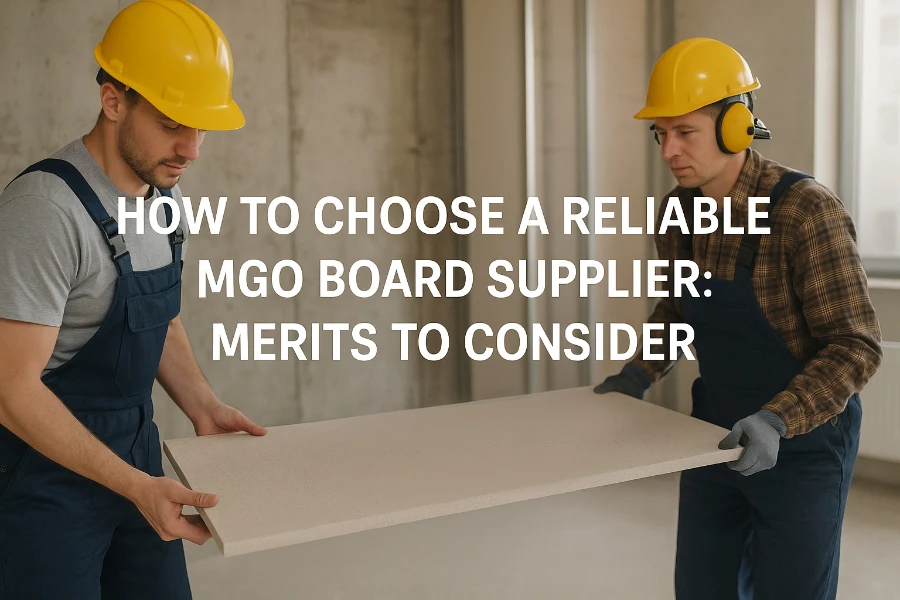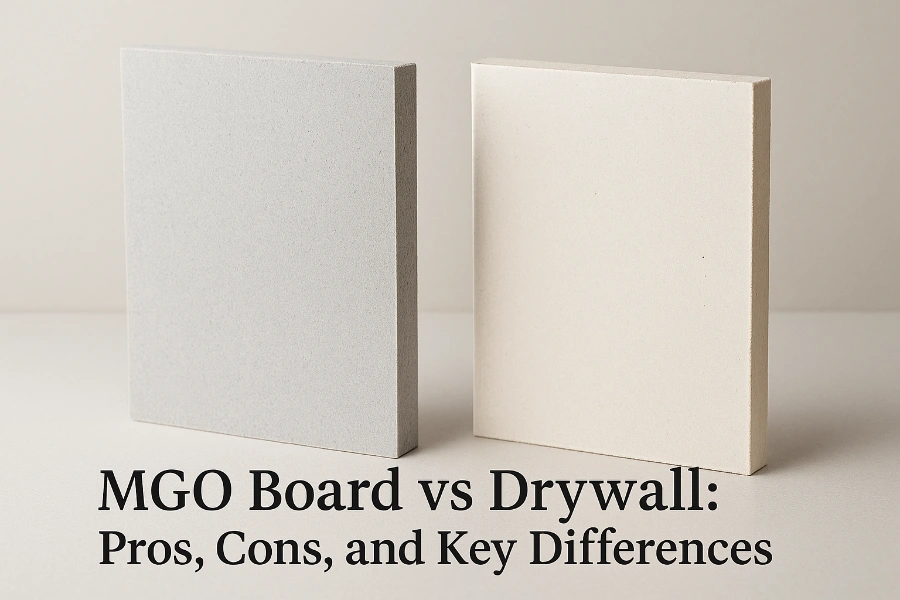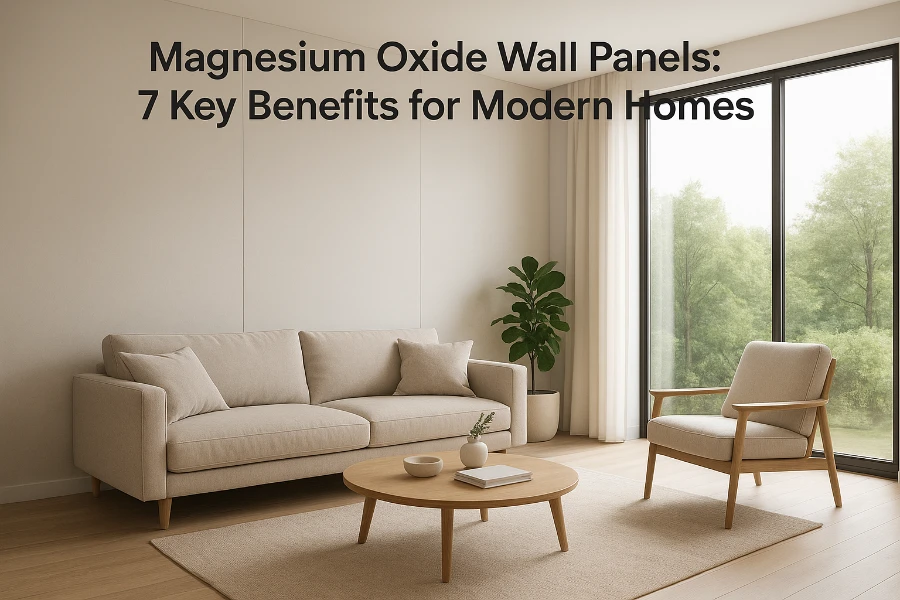Table of Contents
Introduction
In modern construction, manufacturing, and even household renovations, the choice of the right heat proof material can make the difference between safety and disaster. Materials that can withstand high temperatures not only protect structures but also extend the lifespan of projects and reduce maintenance costs. From residential kitchens to large-scale industrial furnaces, different solutions are designed to resist fire and heat in unique ways.
This article explores seven of the most effective options available today, highlighting their features, advantages, and common applications. By the end, you’ll have a clearer idea of which material is best suited for your next project.
1. Gypsum Board (Fire-Resistant Drywall)
Gypsum board is one of the most widely used heat proof materials in residential and commercial construction. It is composed of a non-combustible gypsum core, sandwiched between layers of heavy paper.
Key Features:
-
Lightweight and easy to install
-
Offers basic fire resistance suitable for walls and ceilings
-
Cost-effective compared to other alternatives
Common Applications:
-
Interior walls and partitions
-
Ceilings in homes and offices
-
Temporary fire barriers in construction projects
While gypsum board is not the most advanced option, it remains popular due to its affordability and simplicity. For moderate fire safety requirements, it is often the first choice.
2. Calcium Silicate Board
Calcium silicate board is another reliable heat proof material known for its excellent fire and moisture resistance. Manufactured by combining silica, lime, and reinforcing fibers, it is stronger and more durable than gypsum board.
Key Features:
-
High strength and dimensional stability
-
Resistant to fire, moisture, and mold
-
Longer service life compared to traditional drywall
Common Applications:
-
Tunnel linings and industrial wall panels
-
Ceiling boards in commercial buildings
-
Fireproof enclosures for ducts and cable systems
Its robust performance makes calcium silicate board ideal for projects that demand higher safety standards and longer durability.
3. Fiber Cement Board
Fiber cement board is a versatile heat proof material widely used in both interior and exterior applications. It is made by combining cement with cellulose fibers, giving it high strength and excellent resistance to fire and moisture.
Key Features:
-
Non-combustible and fire-resistant
-
Strong weather resistance, suitable for outdoor use
-
Resistant to termites, rot, and impact
Common Applications:
-
Exterior wall cladding
-
Kitchen and bathroom partitions
-
Fire-rated ceiling systems
Fiber cement board is a preferred choice in regions with extreme weather conditions, as it performs well against both heat and moisture. It provides durability and safety without requiring frequent maintenance.
4. Mineral Wool (Rock Wool & Slag Wool)
Mineral wool, which includes rock wool and slag wool, is among the most effective insulating heat proof materials. Produced from molten stone or industrial slag, it is spun into fibers that provide superior thermal and acoustic insulation.
Key Features:
-
Excellent heat and sound insulation properties
-
Non-combustible and can withstand extremely high temperatures
-
Eco-friendly, as it often incorporates recycled materials
Common Applications:
-
Fire doors and curtain walls
-
Roofing insulation
-
Industrial pipes and furnaces
Because of its high efficiency, mineral wool is often the first choice for improving both fire safety and energy efficiency in large-scale projects.
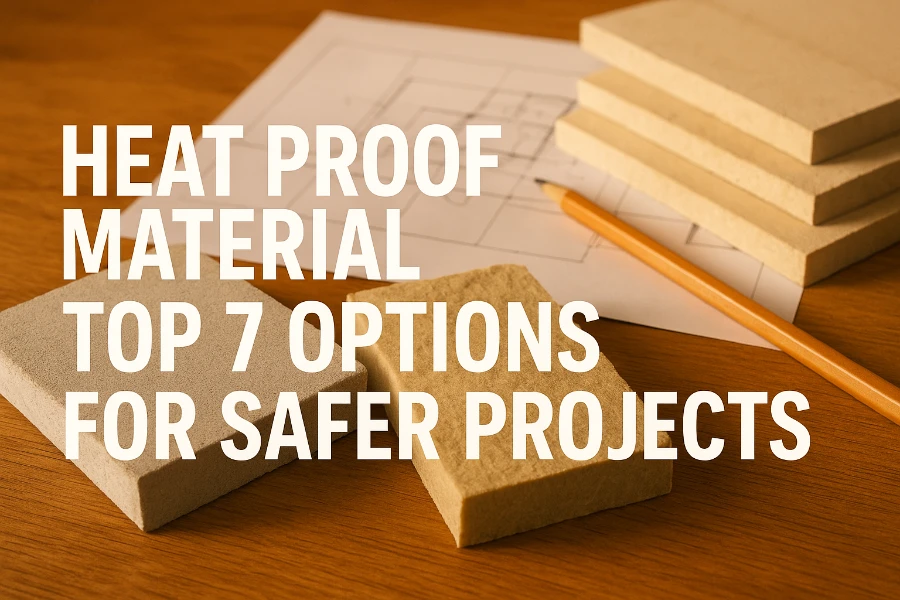
5. Vermiculite Board
Vermiculite board is a lightweight heat proof material made from exfoliated vermiculite. Its natural mineral composition makes it resistant to both fire and chemical corrosion.
Key Features:
-
Lightweight and easy to handle
-
Excellent resistance to fire and high temperatures
-
Provides structural stability even under thermal stress
Common Applications:
-
Fireplace and stove linings
-
Boiler insulation layers
-
Heat shields in industrial environments
Although less common than gypsum or fiber cement boards, vermiculite board is a trusted choice for specialized high-temperature applications.
6. Magnesium Oxide Board (MgO Board)
Magnesium oxide board, often called MgO board, is a next-generation heat proof material that combines fire safety, durability, and environmental benefits. It is manufactured from magnesium oxide, reinforced with fibers, and does not contain toxic substances like asbestos.
Key Features:
-
Non-combustible and classified as Class A fireproof
-
Resistant to moisture, mold, and insects
-
Stable performance in both indoor and outdoor applications
-
Eco-friendly and recyclable
Common Applications:
-
Sub-flooring and underlayment
-
Interior and exterior wall panels
-
Curtain wall backer boards
-
Fireproof ceilings and partitions
MgO board is increasingly popular in modern construction projects because it offers comprehensive safety and long-term reliability.
7. Ceramic & Refractory Materials
Ceramic and refractory products represent some of the most heat-resistant solutions available. These heat proof materials are engineered to withstand extreme conditions where most other boards cannot survive.
Key Features:
-
Withstands temperatures above 1,000°C
-
Excellent abrasion and chemical resistance
-
Long service life in demanding industrial environments
Common Applications:
-
Industrial kilns and furnaces
-
Steel and glass manufacturing equipment
-
High-temperature linings and fire chambers
Although they are more expensive and harder to install, ceramic and refractory materials are unmatched when it comes to extreme heat resistance.
Comparison of Heat Proof Materials
To help evaluate these seven options, here’s a simplified comparison:
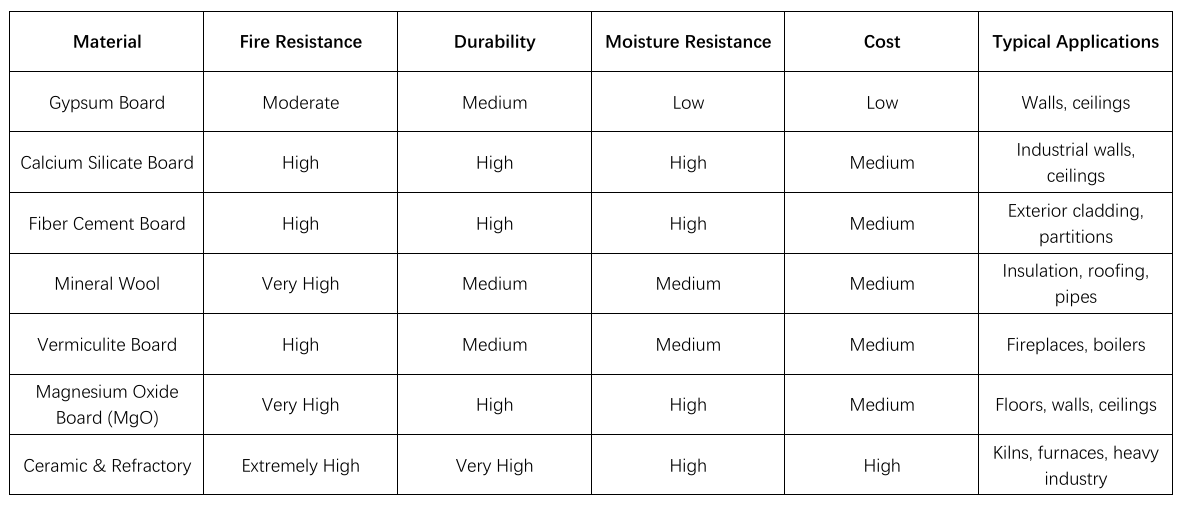
This overview shows that while gypsum is affordable, materials like MgO board and calcium silicate balance safety with cost-effectiveness, whereas ceramics and refractory products dominate extreme industrial use.
How to Choose the Right Heat Proof Material
Selecting the right heat proof material depends on several practical factors. There is no single solution that fits all needs, so decision-making should focus on the environment, safety requirements, and budget.
Key Considerations:
-
Temperature Resistance: For everyday walls and ceilings, gypsum board may suffice. For high-risk industrial sites, MgO board or refractory materials are more suitable.
-
Moisture Conditions: In humid areas, calcium silicate board or fiber cement board is better than gypsum.
-
Durability and Longevity: For long-term stability, MgO board and fiber cement are strong performers.
-
Cost: Gypsum board offers the lowest cost, while ceramic and refractory solutions are premium options.
Practical Tips:
-
For residential interiors, gypsum or fiber cement boards offer a balance of safety and affordability.
-
For commercial spaces, calcium silicate or MgO board provides stronger fireproofing with durability.
-
For heavy industry, ceramic and refractory materials are the only reliable options.
By carefully weighing these factors, you can ensure your chosen material not only meets fire safety standards but also delivers long-term performance.
Conclusion
Fire safety is not a matter to compromise on. Choosing the right heat proof material ensures that buildings, equipment, and people remain safe even in extreme conditions. From affordable gypsum boards to advanced MgO and refractory materials, each option has its own role in protecting structures.
If you’re considering which material best suits your project, our team can provide tailored guidance and high-quality solutions. 📩 Contact us today to discuss your requirements and get expert advice.
How to choose a reliable MGO board supplier: discover key merits of suppliers and magnesium oxide boards for safe, durable, and eco-friendly construction.
Compare MGO board vs drywall to understand their pros, cons, and key differences. Discover which wall material suits your project best.
Discover 7 key benefits of magnesium oxide wall panels for modern homes, from fire resistance and moisture protection to durability and eco-friendliness.

